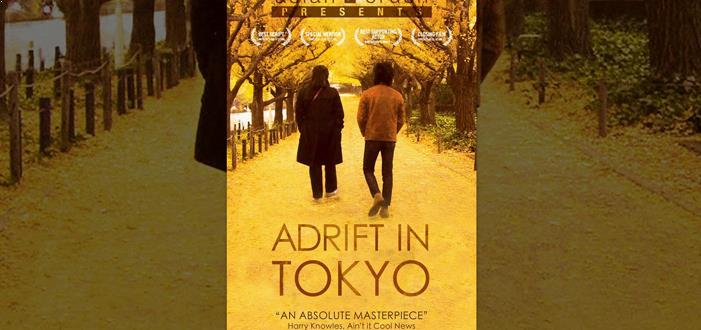
A Drift in Tokyo
Adrift in Tokyo excels where Lost In Translation tried. While the latter emphasizes the alien planet of Tokyo, actively looking on the inside like a 2nd grader to an ant farm, Adrift in Tokyo dazzles us by removing the feeling of alienation with respect to the city, plunging ourselves into its rhythm. It is quite the sophisticated balance of cinematic space, and something I find completely adoring. P.T. Anderson succeeds at this same talent, of capturing a moment of a living reality, versus constructing a cement framed artwork that while artful is also disingenuous. The purveyor can embrace his suspension of disbelief, but the subliminal resistance to disbelief is also something that is unconsciously overcome. It would be so much easier in other words to absorb a film if it was as organic as Adrift in Tokyo.
And truth be told, after formulating the superlatives of an organic film recording, Tokyo comes across on the surface as mundane. But that’s the point. We do not take the turning and whirling of our everyday lives as anything artistic or beautiful. But why not? Why is our life in between bed times not a work of art, an active process of creating meaning in the world, in imbuing reality with value and purpose? Is that too spiritual for this day and age? Was there ever an age where life was treated as art incarnate?
When we think of art, of course, we think of beauty. So it is no wonder that life is not treated as transcendent, for the obvious reasons that it gets ugly and quite frequently. Yet can we not appreciate this ugliness in a grander painting? Is this too convenient to depict? Adrift in Tokyo does just that. It absorbs like a sponge droplets of two intersecting Japanese lives amongst the water of Tokyo patrons. What is the objective? To witness the human bond that takes place when two spiritual wanderers find common ground. Both have their colors painted by different experiences. Yet both find an incredibly unique mutuality which climaxes as the surrogacy of father and son.
Japan is an alien planet, escaping the decline of the West. It is one of those noble places on Earth that could capture the techniques of the West without being destroyed by them. There is so much wonder to a place that can act so complacent during its recent tsunami tragedy; yet it takes eons to create such a culture, where millions have to share a small island. Indeed, they are island people, having had to establish an idiosyncratic culture on the scarcity of land. What prevails, and what will prevail? Timelessness. The Japanese seem to be still. The dynamism of life seems to be ensnared. Perhaps the inclination toward perfectionism, seen in everything from the motor car to watches to knives and to sushi, comes out of this mastery of chaos. They make effort look easy, because they make it a living.
Thus what would otherwise feel like a Last Man’s grave is in Japan an eternal stillness: a cosmic equilibrium between the forces of nature and human life, where even as something as trivial as toenail clipping feels like a spiritual rite.
Grade: A

